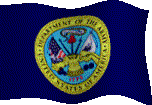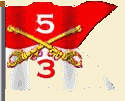Charlie Horse History Forward
The attrition that Charlie Horse experienced in the runup, during, and in the post Lam Son weeks had depleted not only the aircraft, but many members of the Troop. The hardest hit being, of course, the Scout Platoon. All Platoons were working hard to retrain flight crews, but the unique requirements and reflexive teamwork was nowhere more needed than getting experienced Scouts ready for operations in a very challenging AO. The Platoon was reduced to only a few proficient Scout crews. Missions perceived as the most hazardous fell to the most experienced scout pilots. CWO Wayne Forbes, CPT Bill Allen, 1LT Brian Roth were the experienced leaders, followed by CPT Marty Gronborg who was on his second tour as a scout and was rapidly becoming AO proficient. 1LT Tom Bell, WO Steve Hanson and WO Bill Halevy, all on their first tours, were rapidly gaining time and experience. The Scout Platoon wore the “Kamikaze” patch reflecting the dedication but hopefully not the outcome.
Not only Charlie Horse, but new teams from P/75th Ranger were training extensively. The piedmont area from the South China Sea to the foothill to the west of Quang Tri had been a relatively quiet zone prior to the Laos Incursion, but now NVA squad-sized elements were operating with regularity, especially to the west of Quang Tri. Charlie Horse operations began focusing “White” teams composed of two scout aircraft working in tandem providing mutual support in that area to give air time and radio coordination experience to newer scouts. With P/75th Rangers also operating and training in the piedmont, coordinating together they exploited enemy sightings and improved security for the Combat Base. Departing and returning “Hunter Killer” configurations monitored and checked in on the Rangers and were ready to support the “White” teams in the event they made a contact.
21 May 1971
A 122mm “Katyusha” rocket penetrated the roof of a “club bunker” on Firebase C-2. The explosion killed 30 Americans. This was during the Operation Montana Mustang - the 1/5th’s last operation. That evening, still hindered by incoming rocket fire, Charlie Horse Hueys assisted in the medevac and recovery of remains. The 122mm was fitted with a delay fuse allowing it to penetrate the four layers of sandbags and three feet of dirt and explode among the fifty GI’s seeking shelter there during the barrage. The forward fire-support bases along, and just south of the DMZ were experiencing frequent 122mm rocket attacks. While the tripod mounted rocket was an inaccurate device, when enough of them are launched, casualties will result. This barrage of eleven impacted inside the perimeter. This increasing volume of rocket fire had the attention of BG Dunwoody who had replaced BG Hill as CO of the 1/5th. He ordered increased surveillance by the Troop directed to the DMZ specifically to find and destroy the rockets and crews operating there.
NOTE: Charlie Horse officers that were contacted are crystal clear on several points concerning BG Hill. They all say that BG Hill ‘owned’ Charlie Horse even after he was no longer the CO of the 1/5th. They believe he became one of the ADCs (Assistant Division Commander) of the 101st under MG Tarpley. As such, BG Hill continued to direct Charlie Horse’s missions, etc.
Personal Recollections of PFC Ken Johnson:
I was sent to Nam in Jan 71 and stationed in Quang Tri with D/3/5 Cav. First, I was in the motor pool but then volunteered to fly scouts. They classified me as a crew chief. We flew in the OH 58A Kiowa. I was shot down several times with the last time 21 May 1971 in #68- 16774.
On 27 May 1971, A Charlie Horse Team of two Cobra Guns, a Scout and a Huey chase left Quang Tri to perform Recon out west on the Khe Sanh Plateau and the Laotian border. Passing over the Ranger team, a request was made for one of the gun ships to execute a simulated gun run. CPT Paul Carter, with WO Jerry Foy elected to demonstrate for training purposes. CPT Carter was flying a recently acquired Cobra in a “Heavy Hog” configuration. Additional weight of the rockets along with a full fuel load on board, (the expectation was to burn the ‘extra fuel’ off en route to the Laotian border.) and the high-density altitude resulted in the Cobra impacting the ground at the bottom of the simulated gun run. Both pilots were killed instantly. This was AH-1G # 68-15168 at grid YD186455.
Personal Recollections of Fred Blanchard:
I considered CPT Paul Carter, who we called “George,” a good friend. George was very well liked and was a very good pilot. I can't remember his call sign other than it being Charlie Horse. I recall that the official story was that they hit a snag while making gun-runs in support of a ground unit. The unofficial version was that George made a mistake with a very heavy helicopter and just flew it into the ground. It was a tragedy for everyone that knew him.
1 June 1971
Charlie Horse did a four-ship insert of a P/75th Ranger team assigned to observe NVA activity from a position near the abandoned FSB Shepard. MAJ Wolfe with WO Frank Angotti as co-pilot were Chalk 4. They took small arms fire while on short final. After touching down in the LZ, they started receiving mortar fire. A near miss damaged the rotor blade – only discovered on shutdown at the Maintenance hangar at Quang Tri. A four-inch hole in the leading edge grounded that Huey. After pre-flighting another Huey, Wolfe and Angotti returned to the LZ to participate in the now necessary extraction. Linking up with the Recon team on station, the extraction was made under heavy fire. The Ranger team was on a saddle in two areas. The first Huey took some small arms damage but got in and out with all but two of the Rangers. MAJ Wolfe and Angotti received small arms fire from the approach end of the saddle from two boulder-protected bunkers. With the remaining Rangers on board, Wolfe found himself trapped in the LZ receiving fire from both exit directions. The NVA were in bunkers on the “military crest,” just below the top. Exiting the LZ would require passing through the line of sight of the bunkers on either end of the LZ. Their Huey was also taking AK fire in the LZ. Wolfe ordered the Cobra Guns to attack the bunkers even if he would take shrapnel from their rockets. He couldn’t remain in the LZ. CPT Joe Hogg lead the two Cobras “in-line” with the second gun slightly lower and in an angle of attack that would have the exiting Huey flying out in the direction of the incoming Cobra Guns through the line of fire. As they passed, the lead Cobra either hit its own shrapnel or the shrapnel of the following Cobra, shattering the canopy. The extract complete, the Charlie Horse Team prepared to return to Quang Tri when a 101st ARA team that had assisted in the covering fire called that they were inbound one more time. MAJ Wolfe instructed them to withdraw as there was no further need for rocket fire. As the lead ARA Cobra was already inbound when he was hit with 51 fire. He radioed, “I should have listened to you 6.” He attempted a forced landing in the LZ, but the aircraft slipped over the edge then rolled down the opposite side of the saddle killing both pilots. They were recovered two weeks later. Maintenance reported that MAJ Wolfe’s Huey had over 70 bullet and shrapnel holes. The DG and CE were slightly wounded but returned to duty. Angels on board obviously.

.gif)


